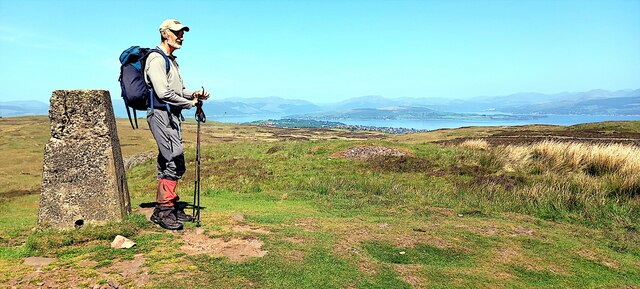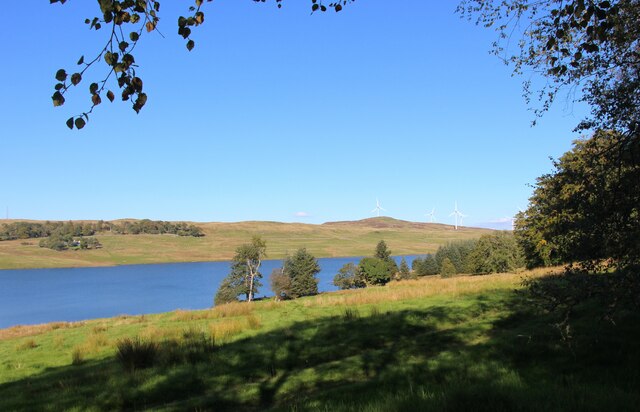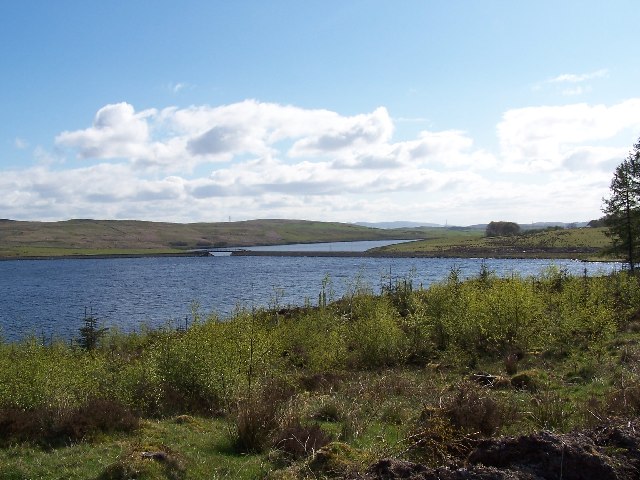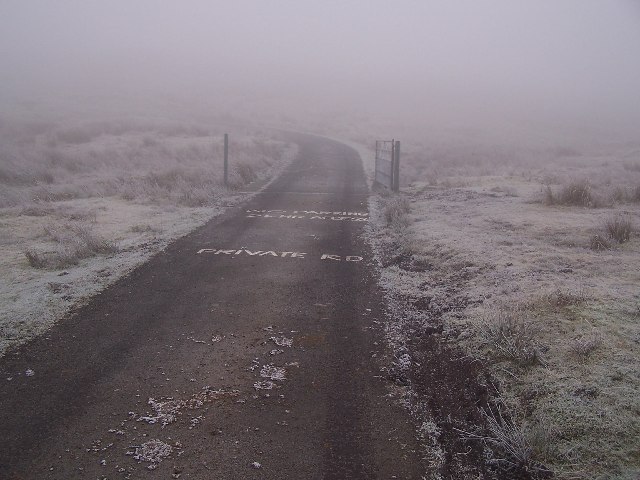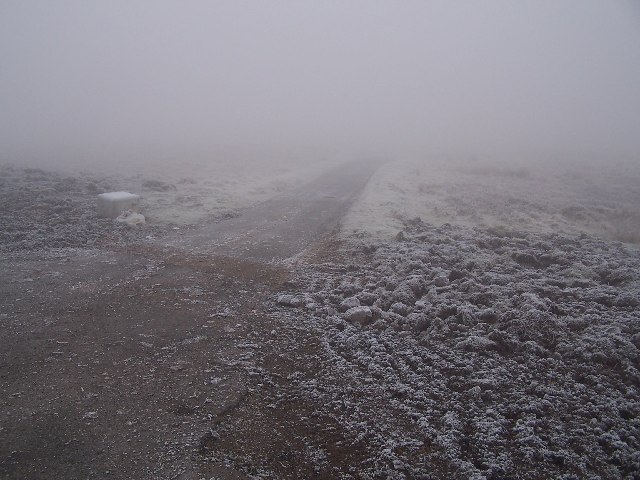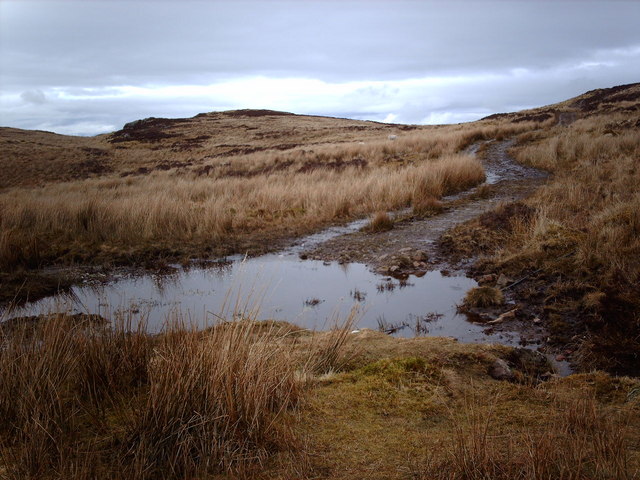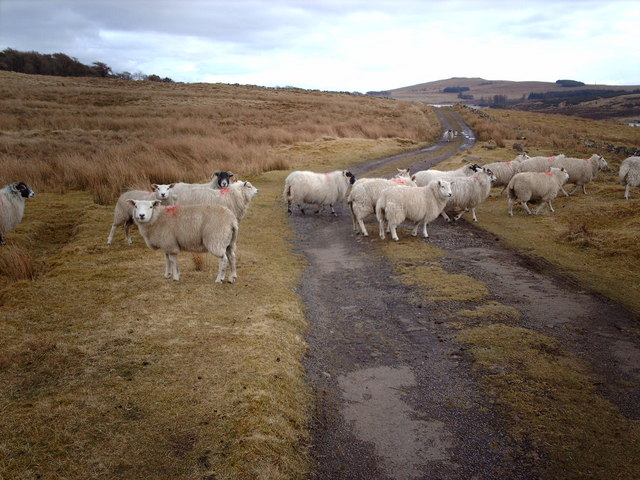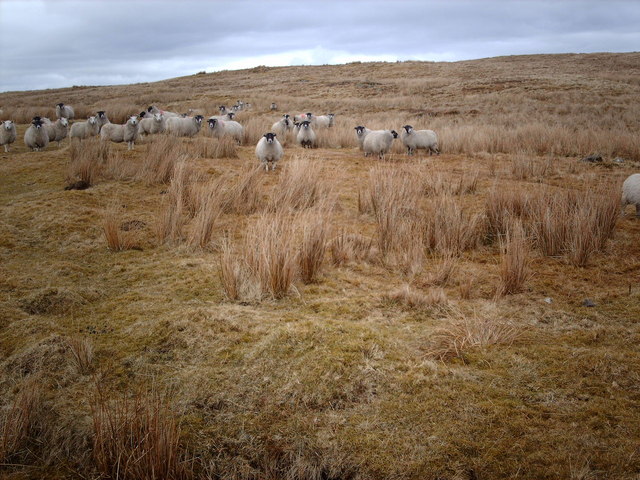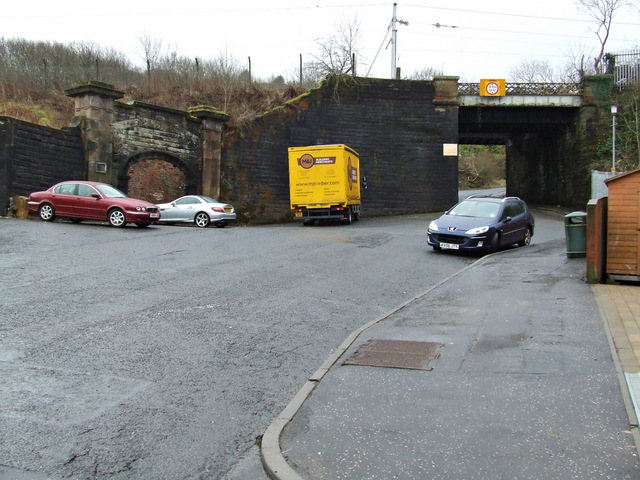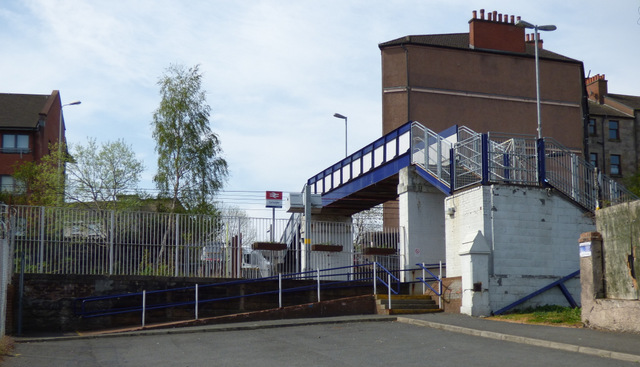Crawberry Hill
Hill, Mountain in Renfrewshire
Scotland
Crawberry Hill
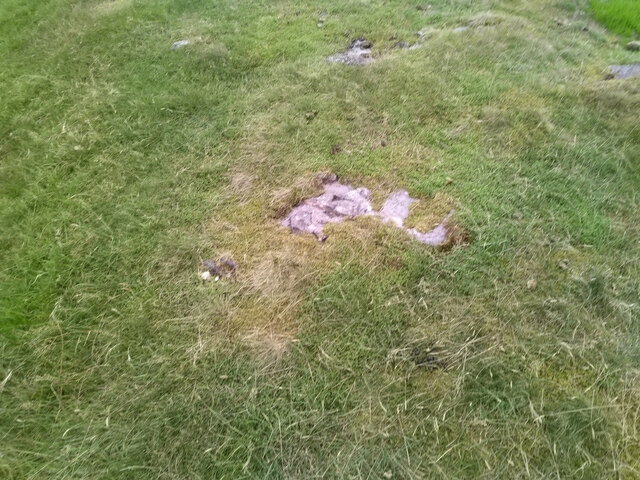
Crawberry Hill is a prominent hill located in the region of Renfrewshire, Scotland. It is part of the scenic landscape in the area and stands at an elevation of approximately 334 meters (1,096 feet) above sea level. The hill is situated near the village of Howwood, about 21 kilometers (13 miles) southwest of Glasgow.
Crawberry Hill is characterized by its gentle slopes and lush greenery, making it a popular spot for outdoor activities and nature enthusiasts. The hill offers stunning panoramic views of the surrounding countryside, including the striking Clyde Muirshiel Regional Park to the west.
The terrain of Crawberry Hill is primarily composed of grassland and heather, with scattered patches of woodland. Its fertile soil makes it an ideal habitat for a variety of plant species, which in turn attracts a diverse range of wildlife. Birdwatchers may catch a glimpse of various bird species, including buzzards, kestrels, and pheasants.
For hikers and walkers, Crawberry Hill offers a number of trails and paths to explore, catering to different fitness levels. The routes allow visitors to immerse themselves in the natural beauty of the area, with opportunities to spot wildflowers, small mammals, and even deer.
Crawberry Hill is a delightful destination for those seeking tranquility and a picturesque escape from the hustle and bustle of urban life. Its combination of stunning vistas, rich flora and fauna, and recreational opportunities make it a cherished landmark in Renfrewshire.
If you have any feedback on the listing, please let us know in the comments section below.
Crawberry Hill Images
Images are sourced within 2km of 55.920903/-4.7480191 or Grid Reference NS2873. Thanks to Geograph Open Source API. All images are credited.
![Remains of enclosures See <a href="https://www.geograph.org.uk/photo/1853572">NS2973 : Lurg Moor Roman fortlet</a> for a discussion of various other antiquities located nearby on the moor, with links to photographs. Compared to some of those sites, the remains shown in the present photograph are less conspicuous, but they are shown on the 1:25000 OS map.
Several enclosures have been reported in the immediate vicinity of this one, but the remains shown in this photograph are the easiest to pick out visually. See <span class="nowrap"><a title="https://canmore.org.uk/site/41340/burnhead-moor" rel="nofollow ugc noopener" href="https://canmore.org.uk/site/41340/burnhead-moor">Link</a><img style="margin-left:2px;" alt="External link" title="External link - shift click to open in new window" src="https://s1.geograph.org.uk/img/external.png" width="10" height="10"/></span> (at Canmore) for further details; the subject of this photograph is structure &quot;A&quot; in that report, the D-shaped enclosure. Structures &quot;A&quot; and &quot;B&quot; together make up the enclosures that are depicted on the 1:25000 map.
[See <span class="nowrap"><a title="https://www.google.com/maps/d/viewer?mid=1Np6emNB53CxbNJmyJ_LicpxJvus&amp;ll=55.915499%2C-4.72162400000002&amp;z=19" rel="nofollow ugc noopener" href="https://www.google.com/maps/d/viewer?mid=1Np6emNB53CxbNJmyJ_LicpxJvus&amp;ll=55.915499%2C-4.72162400000002&amp;z=19">Link</a><img style="margin-left:2px;" alt="External link" title="External link - shift click to open in new window" src="https://s1.geograph.org.uk/img/external.png" width="10" height="10"/></span> for an annotated satellite image (zoom out for other antiquities located nearby). The satellite view shows some other interesting details nearby: for example, only 60 metres ESE is another feature, the form of two overlapping circles: I examined that area on a later visit: <a href="https://www.geograph.org.uk/photo/2089851">NS3072 : Possible hut circles on Burnhead Moor</a>.]
The present photograph shows two ridges, both greener than the surrounding moor, but with some dark tussocks along their course. The nearer one is straight, and the more distant one is curved into a C-shape, with the open side toward the photographer, so that they are arranged (very roughly) as &quot;C|&quot;.
In the foreground, just below the centre of the photograph, part of the nearer (straight) ridge runs across the width of the image, sloping upwards to the right. Behind it is the other (curved) ridge. Only one half of its C-shape is seen in this view; the near end of that arm of the ridge is to the left of and slightly above the centre of the photograph. From there, the ridge can be followed to the right-hand edge of the picture.
Providing confirmation of the view direction, Corlic Hill (called Corlick Hill on the OS map) appears centrally on the skyline.](https://s3.geograph.org.uk/geophotos/01/85/55/1855511_63674562.jpg)

![Possible hut circles on Burnhead Moor [Update: on the nature of what is shown here, the following comments refer to a field visit made by professional archaeologists in 2012: &quot;It is possible that both features ... are the remains of hut platforms, but they are equally likely to be the result of geology and natural vegetation cover&quot;. One of the main reasons for my submitting possible finds is so that they can be properly assessed, and I am glad that this has occurred.]
A number of hut circles and ancient enclosures have already been reported from these moors. The majority of these discoveries were made by the Renfrewshire archaeologist Frank Newall.
Three such sites are known from the immediate vicinity of the area shown in this photograph; for those reports, see (1) <span class="nowrap"><a title="https://canmore.org.uk/site/41340/burnhead-moor" rel="nofollow ugc noopener" href="https://canmore.org.uk/site/41340/burnhead-moor">Link</a><img style="margin-left:2px;" alt="External link" title="External link - shift click to open in new window" src="https://s1.geograph.org.uk/img/external.png" width="10" height="10"/></span> (2) <span class="nowrap"><a title="https://canmore.org.uk/site/41375/burnhead-moor" rel="nofollow ugc noopener" href="https://canmore.org.uk/site/41375/burnhead-moor">Link</a><img style="margin-left:2px;" alt="External link" title="External link - shift click to open in new window" src="https://s1.geograph.org.uk/img/external.png" width="10" height="10"/></span> (3) <span class="nowrap"><a title="https://canmore.org.uk/site/42449/burnhead-moor-hut-circle" rel="nofollow ugc noopener" href="https://canmore.org.uk/site/42449/burnhead-moor-hut-circle">Link</a><img style="margin-left:2px;" alt="External link" title="External link - shift click to open in new window" src="https://s1.geograph.org.uk/img/external.png" width="10" height="10"/></span> (all at Canmore). The first of those reports corresponds to <a href="https://www.geograph.org.uk/photo/1855511">NS3072 : Remains of enclosures</a>; the other two are about sites just to the north and west of those enclosures.
However, the rather faint feature that is shown in this photograph lies about 65 metres to the east of the enclosures; it seems, therefore, that this particular site had not been reported until now. It is noticeable on some satellite imagery (although to what extent very much depends on when those images were taken); see the link in the end-note for a satellite view centred on this feature.
The NW circle of the pair is shown here at the centre of the photograph, and it fills most of the width of the image. For a view from a different angle, see <a href="https://www.geograph.org.uk/photo/2089865">NS3072 : Possible hut circles on Burnhead Moor</a>. The area is flat, and falls away at its northern rocky edge. In both photographs, traces of a low circular ridge can be seen on the elevated upper surface (most notably at the link just cited).
These circular features might be hut circles (the conventional name given to the remains of roundhouses – circular dwellings of various kinds – dating from the late Bronze Age or early Iron Age); if this interpretation is correct, then the overlapping circles indicate that a later building was erected on almost the same spot as an earlier one (a good location was likely to be re-used). As mentioned above, several rather more visible hut circles have already been recorded from other parts of the moor (see <a href="https://www.geograph.org.uk/photo/1853572">NS2973 : Lurg Moor Roman fortlet</a> for the relevant links).
The area shown in the present photograph is flat, and is slightly elevated above the surrounding moorland; it would have provided an ideal platform for a dwelling. However, the traces visible on the ground here are slight, and it would take a more expert appraisal than mine to definitely identify them as genuine hut circles. Nevertheless, the feature shown in the present photograph may merit further examination; to that end, I have submitted a report to WoSAS (that report also includes the feature described below).
Similar circular features can be seen nearby; one of them is located just 55 metres to the east: <a href="https://www.geograph.org.uk/photo/2089891">NS3072 : Possible hut circle on Burnhead Moor</a>.](https://s3.geograph.org.uk/geophotos/02/08/98/2089851_3b668788.jpg)
![Possible hut circles on Burnhead Moor [Update: on the nature of what is shown here, the following comments refer to a field visit made by professional archaeologists in 2012: &quot;It is possible that both features ... are the remains of hut platforms, but they are equally likely to be the result of geology and natural vegetation cover&quot;. One of the main reasons for my submitting possible finds is so that they can be properly assessed, and I am glad that this has occurred.]
See <a href="https://www.geograph.org.uk/photo/2089851">NS3072 : Possible hut circles on Burnhead Moor</a> for the main description. The present photograph is likewise a view over the north-western circle of the pair, but looking to the NE.
Compare a known <a href="https://www.geograph.org.uk/photo/1855199">NS2973 : Hut circle on Lurg Moor</a>, which is located about 1.3 km to the NNW, and which presents a rather similar appearance; the slightly-elevated area shown in the present photograph is likewise very flat on top. Note also, in the present view, what appears to be a low ridge, extending from the near side of the rocky area on the left, and following a curving course along the near edge of the flat elevated area.
Harelaw Reservoir can be seen in the background, although it is more apparent in the larger versions of the image.](https://s1.geograph.org.uk/geophotos/02/08/98/2089865_bdfd4472.jpg)
![Possible hut circle on Burnhead Moor [Update: on the nature of what is shown here, the following comments refer to a field visit made by professional archaeologists in 2012: &quot;It is possible that both features ... are the remains of hut platforms, but they are equally likely to be the result of geology and natural vegetation cover&quot;. One of the main reasons for my submitting possible finds is so that they can be properly assessed, and I am glad that this has occurred.]
This feature is located about 55 metres to the east of <a href="https://www.geograph.org.uk/photo/2089851">NS3072 : Possible hut circles on Burnhead Moor</a>; the view direction of both photographs is the same.
The circular outline fills most of the width of the image, and can be followed as a line of tussocks (the left-hand side is more apparent than the right). The feature is about 15 metres across, and could be the remains of a hut circle that had gone unrecorded until now; see the link in the previous paragraph for further details. Traces of ancient enclosures had already been recorded from close to this spot, and several hut circles are present elsewhere on the moor (see the 1:25000 map for <a href="https://www.geograph.org.uk/gridref/NS2973">NS2973</a>, and see <a href="https://www.geograph.org.uk/photo/1853572">NS2973 : Lurg Moor Roman fortlet</a> for links to the various antiquities located in this area).
See <span class="nowrap"><a title="https://www.google.com/maps/d/viewer?mid=1Np6emNB53CxbNJmyJ_LicpxJvus&amp;ll=55.915215999999994%2C-4.7198399999999765&amp;z=19" rel="nofollow ugc noopener" href="https://www.google.com/maps/d/viewer?mid=1Np6emNB53CxbNJmyJ_LicpxJvus&amp;ll=55.915215999999994%2C-4.7198399999999765&amp;z=19">Link</a><img style="margin-left:2px;" alt="External link" title="External link - shift click to open in new window" src="https://s1.geograph.org.uk/img/external.png" width="10" height="10"/></span> for a satellite view centred on this feature, which is indicated by a marker. On that view, there are hints of several similar features nearby, but they are considerably fainter and more indistinct.
[I have submitted a report to WoSAS, describing this circular feature and the one that is located 55 metres to the west (on which, see the link in the second paragraph).]](https://s3.geograph.org.uk/geophotos/02/08/98/2089891_9f90a19a.jpg)
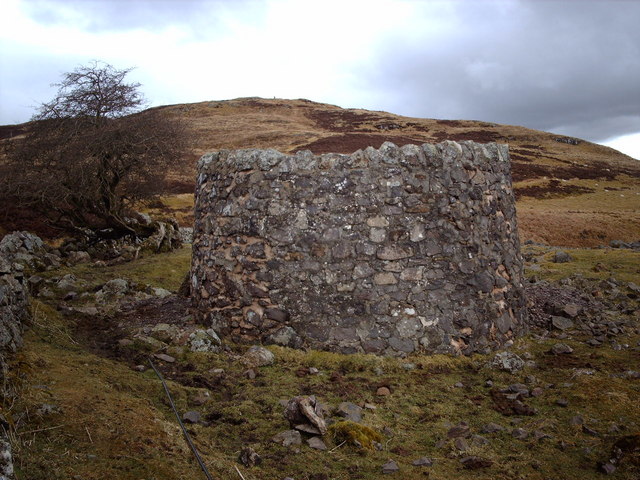

Crawberry Hill is located at Grid Ref: NS2873 (Lat: 55.920903, Lng: -4.7480191)
Unitary Authority: Inverclyde
Police Authority: Renfrewshire and Inverclyde
What 3 Words
///finds.chase.menu. Near Greenock, Inverclyde
Nearby Locations
Related Wikis
Gryffe Reservoirs
The Gryffe Reservoirs, also spelled 'Gryfe', take their name from the River Gryffe, name deriving from the Gaelic garbh meaning "rough stream". are two...
Easter Greenock Castle
Easter Greenock Castle was a castle of unknown design near the burgh of Greenock, Scotland. == History == === Construction and location === Built sometime...
Whinhill railway station
Whinhill railway station is a railway station located in the east of the town of Greenock, Inverclyde, Scotland. The station is managed by ScotRail and...
Inverclyde (UK Parliament constituency)
Inverclyde is a parliamentary constituency of the House of Commons of the Parliament of the United Kingdom. It replaced Greenock and Inverclyde and the...
Upper Greenock railway station
Upper Greenock railway station was a railway station serving the town of Greenock, Inverclyde, Scotland, originally as part of the Greenock and Wemyss...
Inverclyde
Inverclyde (Scots: Inerclyde, Scottish Gaelic: Inbhir Chluaidh, pronounced [iɲiɾʲˈxl̪ˠuəj], "mouth of the Clyde") is one of 32 council areas used for local...
Lynedoch railway station
Greenock Lynedoch was a railway station serving Greenock, Inverclyde, Scotland, originally as part of the Greenock and Ayrshire Railway. == History... ==
Cartsdyke
Cartsdyke (Scots: Cairstdyke, Scottish Gaelic: Gàradh Cairte), formerly known as Crawfurdsdyke, is a suburb of the town of Greenock, Scotland.Crawfurdsdyke...
Nearby Amenities
Located within 500m of 55.920903,-4.7480191Have you been to Crawberry Hill?
Leave your review of Crawberry Hill below (or comments, questions and feedback).
